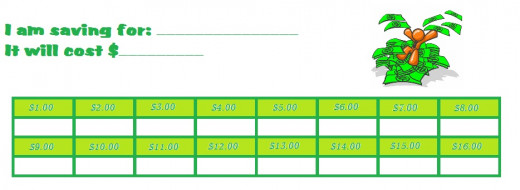Ways to Help Your Child Learn About Saving Money and Financial Stability

Children Should Learn about Finances Early in Life
One of the most important skills that a child can learn is how to save money. It’s considered to be self-discipline because it will affect the way they handle finances throughout their lifetime. Many children do not learn these tips from their parents but from certain courses such as accounting throughout their years in high school. Those who do not take an accounting course or a financial planning course, will be left without the necessary skills to plan and budget their lifestyles. When a child is taught at an early age to manage their savings, they will be equipped with this skill for their entire childhood and adulthood.
Teach Them about The Long Term Finances by Using Your Current Planning Strategies
Although many parents wish to keep their children out of their finances it can help them understand what is ahead of them in the future. They do not have to know how much money you make or even where the money is spent, but letting them sit in on financial planning such as investments, future planning, and retirement planning they can pick up what it means to be financially set for their later years. It will also set an example of how learning about finances is not only something to know once you move out of your parent’s home but it’s also something that will follow you throughout your lifetime.

4 Ways to Teach Your Child to Save!
Saving money at a young age for that one special toy can be stressful for a child. The time does not go by quick enough, the money doesn't add up fast enough, and what little they have managed to save up is burning a hole straight through their pockets. Here are 4 ways that you can teach your child to save their money while also rewarding them and making it a fun experience.
1. Coupons for Younger Children
Although some children may be too young to handle money, creating coupons to reward when good behavior is shown is an excellent start for them to learn to start saving. You can implement a system where if they have so many coupons saved up they can earn a reward such as an extra thirty minutes of television or gaming, a special tasty treat, or a new toy. The possibilities for rewarding a child is endless.
2. The Money Jar Method
There are several methods where saving money can be beneficial. Using a jar, or an envelope, can help your child put away his or her money over time and watch the savings pile up. A simple pickle jar that has been cleaned can be a great start. Have your child draw a picture and tape it to the jar to show that it's for saving money. They will enjoy the outcome of what the jar looks like and be more enticed to contribute to it. If they have a special item that they want o save up for, have them clip an ad for it out of a sales paper or have them draw the item and use this as the jar's decoration.
3. Create a Savings Chart
A savings chart can be ideal for a specific item that your child is determined to get such as a new video game. The chart below can show you an example of an easy to make savings chart that you can use for children of all ages. You can choose to create your own with your child so that they understand the concept of the chart or you can print one off the internet. As your child saves up the money, you can simple check off or color in the boxes that show that amount. Before making the chart, be sure that you know exactly what your child is trying to save up for and how much it will cost, taxes included.
4. Matching Your Child's Contributions
If your child has already shown that they wish to save money for a certain item, help them out a little. If they have set aside a certain amount of money, match that amount. Of course, for some children this might only be fifty cents or a few dollars, others might actually surprise you with the amount of money they can save when you match their contributions.

Children Learn By Example
You can teach your child a lot of things by showing them and talking with them but they learn a great deal from watching you in everyday life. Set a good example for them by showing them that you too save money. Create your own jar for a rainy day and let your child "catch" you putting money into it. You can also pick out an item that you would like to improve your home and put it on the refrigerator with a money chart next to it. Children love to learn and learning from a parent's example is the best.
Show Your Kids that Other Kids Do It Too!
© 2014 everyday living








